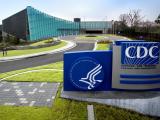With considerable fanfare, US officials today unveiled the "Global Health Security Agenda" (GHSA), described as a 30-nation effort to strengthen disease response capabilities around the world, but they offered relatively limited details on what it will involve.
The fundamental aim of the initiative is to improve the ability of countries around the world to prevent, detect, and respond to infectious disease outbreaks, a yardstick on which many governments now fall short, US officials said.
"In 2012 we were really struck by the reality that more than 80% of countries did not meet the World Health Organization [WHO] deadline for being prepared for infectious disease threats," said Laura Holgate of the National Security Council at an embargoed press briefing yesterday. She referred to the revised International Health Regulations (IHR), which in 2007 set new standards for capabilities to detect and respond to disease and other health threats.
Making clear that the problem persists, the WHO's Regional Office for Europe announced yesterday that 21 European countries have requested an extension of this summer's deadline for complying with the IHR.
Washington conference
Today US officials, led by Health and Human Service (HHS) Secretary Kathleen Sebelius, convened a Washington conference of 26 governments to discuss the GHSA. The effort also includes the WHO, the World Organization for Animal Health (OIE), and the United Nations Food and Agriculture Organization.
In opening remarks that were webcast, Lisa Monaco, assistant to President Obama for homeland security and counterterrorism, predicted that participating countries would commit today to specific actions. The rest of the meeting was closed to the media.
In describing the GHSA, officials hammered on the theme that pathogens and disease threats can capitalize on modern transportation to quickly spread worldwide.
"Microbes and diseases are moving faster and farther than ever," Sebelius said in her opening remarks at today's conference. "And one thing we know for certain: They do not recognize or stop at national borders. A threat anywhere is indeed a threat everywhere."
"We face a real storm of vulnerability," including natural outbreaks like H7N9 influenza, antimicrobial-resistant pathogens, and intentionally created organisms that could be released accidentally or deliberately, said Tom Frieden, MD, MPH, director of the Centers for Disease Control and Prevention (CDC).
By improving disease prevention, detection, and response, Sebelius said, "Working together across at least 30 countries, we can protect at least 4 billion global citizens within the next 5 years."
An HHS press release cites a wide range of objectives that relate to the GHSA: slowing the spread of antimicrobial resistance, establishing national biosecurity systems, reducing zoonotic disease transmission, increasing routine immunization, establishing and strengthening national infectious disease surveillance and laboratory systems, and developing public health electronic reporting systems and emergency operations centers.
Projects in Uganda, Vietnam
As examples of the kinds of efforts the new program will involve, officials pointed to pilot projects that the CDC conducted in cooperation with Uganda and Vietnam in 2013.
The two pilot projects "showed that rapid progress was possible," Frieden said at the press conference.
The projects were described in the CDC's Morbidity and Mortality Weekly Report 2 weeks ago. Both involved setting up emergency operations centers, strengthening communications for outbreak response, and improving diagnostic capabilities.
This year the CDC plans to spend $40 million in existing funds for similar efforts in 10 more countries, Frieden announced at the press briefing. In 2015 the Obama administration will propose budgeting $45 million for like programs in still more countries, he said. The US Defense Threat Reduction Agency will be working with the CDC on this year's projects, HHS said in its press release.
One specific goal of the GHSA, said Frieden, is that countries achieve the capability to detect five of the most deadly pathogens in at least 80% of their land area. Another goal is for all countries to have emergency operations centers to direct fast responses to disease threats.
Participating countries
HHS said the following countries joined the United States at today's inaugural GHSA conference: Argentina, Australia, Canada, Chile, China, Ethiopia, Finland, France, Georgia, Germany, India, Indonesia, Italy, Japan, Kazakhstan, Mexico, Netherlands, Norway, the Republic of Korea, the Russian Federation, Saudi Arabia, South Africa, Turkey, Uganda, the United Kingdom, and Vietnam.
China came in for praise from Monaco for its handling of disease outbreaks. "I want to thank China for its swift, transparent reporting on H7N9 and other outbreaks," she said. "This effort serves as a model for all other states to support global health security."
At the press briefing, Holgate predicted that China, India, and Indonesia would be announcing specific projects in connection with the GHSA.
Frieden didn't name the 10 countries in which GHSA projects will be conducted this year, but he said they will be low- and middle-income nations. "We've identified that they have interest and willingness to make rapid progress and a clear need," he said.
He said the general thrust of the program will vary depending on national economic status.
"For upper-income countries, we're asking that they get their own system well run and they offer development assistance," he explained. "For middle-income countries, the approach is technical cooperation," which he said was exemplified by the strengthening of China's system so it could quickly identify H7N9 when it emerged.
"For low-income countries, there may be assistance in establishing laboratory networks or a cadre of disease detectives or establishing emergency operations centers," he added.
Several US agencies involved
Officials stressed that the US effort on the GHSA involves several government departments, not just HHS. High-ranking officials from the departments of State, Defense, and Agriculture participated in today's conference, according to HHS.
Andrew C. Weber, assistant secretary of defense for nuclear, chemical and biological defense programs, said at the press briefing, "We're bringing DoD [Department of Defense] resources to the Global Health Security Agenda . . . by leveraging the department's long history of medical and health innovation."
In response to a question about what the GHSA will add to existing international efforts to battle infectious diseases, Holgate of the National Security Council commented, "What we're looking at here is a chance to put some political spotlight on it by convening a ministerial level meeting and putting a focus on" a number of specific activities. By progressing on those efforts, she added, "We'll make a big dent in IHR compliance that we're aiming for."
Weber added, "This is intended to be a shot in the arm that will energize and elevate the health security agenda. We hope to bring new resources to bear, in the way the CDC and DoD have been working for years to bring our resources together and make the whole greater than the sum of the parts."
More time needed for IHR compliance
The WHO Regional Office for Europe, in its statement yesterday, said 21 of 55 European region countries that participate in the IHR have asked for extensions of the June 2014 deadline for developing their core capacities to comply with the regulations.
"They need more time to fully develop their capacities to detect, assess, inform about and respond to emergencies," the statement said.
"Since then, countries and WHO/Europe have focused on developing national capacities to make health security a global reality," the statement said. "This goal has not yet been reached. Until all countries are fully prepared to respond to disease outbreaks and emergencies, no country is safe."
See also:
Feb 13 HHS press release
Feb 12 WHO Europe statement
Transcript of Sebelius's opening remarks at conference
Jan 31 MMWR article on Uganda demonstration project
Jan 31 MMWR article on Vietnam demonstration project
Jan 30 CIDRAP News story "CDC pilot programs boost disease response in Uganda, Vietnam"






















